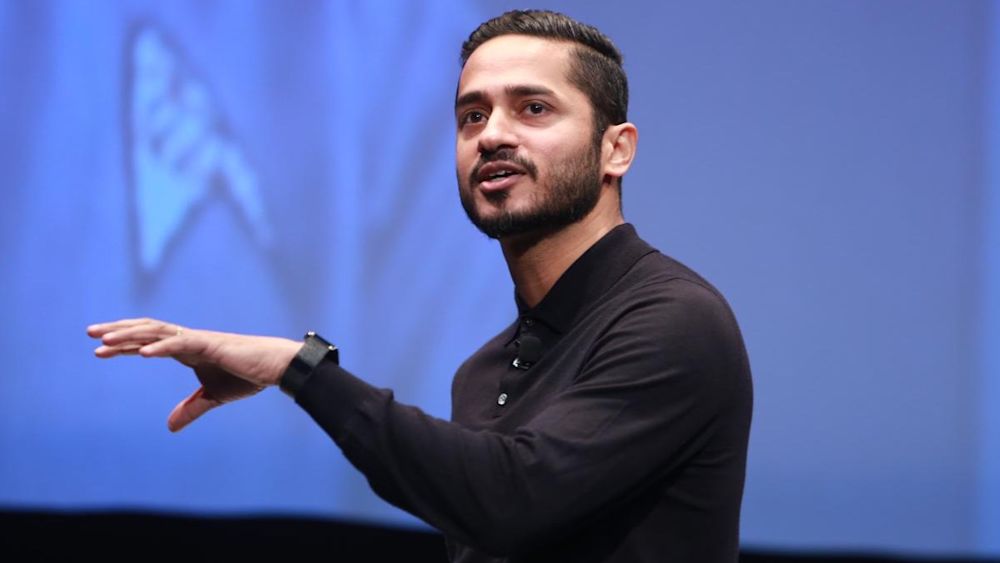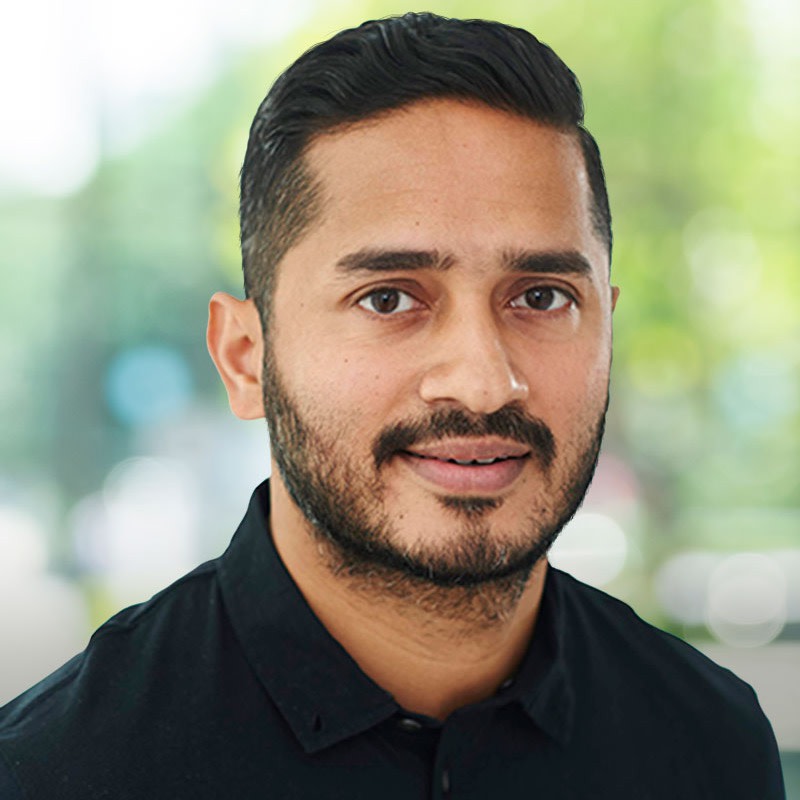- Iterate
- Meet The Team
- Inside Mayur Gupta's Magic Intersection of Purpose and Profitability
Inside Mayur Gupta's Magic Intersection of Purpose and Profitability
Gannett is now transitioning from an advertising revenue model to one more focused on subscriptions and membership, where both revenue streams play a part in building a more sustainable business. The company reported 1.1M subscribers for the end of Q4 2020, up 29%, and is aiming for 10M by 2025. At the helm of this lofty initiative is Mayur, the man with the most interesting resume in marketing.

One of the most influential figures in U.S. marketing does not have a marketing degree. He's never worked as an account manager or managed a brand's social media feed. The anomalies in Mayur Gupta's resume, though, might be his greatest strengths.
A former engineer and product lead who grew up in India, Mayur has spent the last decade leading engagement-focused marketing efforts for places like Kimberly-Clark, Spotify, and Freshly. Three very different companies with three very different missions, and yet they all grew enough for Mayur to be ranked No. 14 on the 2020 Forbes World’s Most Influential CMOs list.
Eight months ago, Mayur took on perhaps his most interesting challenge yet by becoming the Chief Marketing & Strategy Officer of legacy news organization Gannett. The largest newspaper publisher by total daily circulation in the country, Gannett owns more than 250 daily and 300 weekly newspapers. Its flagship publication, USA TODAY, is one of the most-distributed newspapers in the world.
But this is also a company built on a product, newspapers, that has been pummeled by the new digital economy. Since 2008, industry advertising revenue is down more than 60%, newspaper circulation is an all-time low, and national newsroom employment has dropped around 50%. Gannett’s own headcount fell 13% in 2019, and that was before the company counted hundreds of coronavirus-related layoffs, furloughs, and buyouts in 2020.
Gannett (NYSE: GCI) is now transitioning from an advertising revenue model to one more focused on subscriptions and membership, where both revenue streams play a part in building a more sustainable business. The company reported 1.1M subscribers for the end of Q4 2020, up 29%, and is aiming for 10M by 2025. At the helm of this lofty initiative is Mayur, who led similar transitions for both Spotify and Freshly.
“This is a magnificent transformation opportunity,” Mayur said in an interview with The Org. “Anyone who has worked in and grown startups knows that it's always easy to draw on a blank canvas. It's a different challenge and a different feeling and hype when you're trying to transform something that has proven its impact for a very different purpose and mission.”
After earning a Masters in Computer Science from the Institute of Management Technology, Ghaziabad, in 2001, Mayur says he was writing code for 20 hours a day, sometimes 24. Unsurprisingly, his first big job was as a developer for SapientNitro, now a part of digital transformation partner Publicis Sapient. When that company acquired an ad-tech product called BridgeTrack in 2006, Mayur was asked by a mentor to become its product lead. The task turned out to change Mayur’s entire career, as it was his first entree into building technology solutions for different clients and just happened to be for a company that was one of the first to see the convergence of marketing tech and data science.
Mayur was at Publicis Sapient for 12 years. By using his background in code to turn marketing projects into more synced and clear systems, he rose all the way to Technology Director - Marketing Technology & Strategy. In 2012, he left to join Kimberly-Clark as its first-ever Global Head of Marketing Technology & Innovation, a huge job at one of the largest CPG companies in the world.
There were a lot of lessons to be taken from that position, but for Mayur, the most important was discovering that marketing is actually pretty simple: it’s just about being a good human being.
“If you think about the core principles of marketing, it’s making sure whatever you're promising ladders up to your purpose, and then making sure you deliver what you promised,” Mayur said. “These are things that you teach your children. It's weird that in the race to make the numbers meet, we forget those basics.”

His next decade, including next stops as Global VP for Growth & Marketing at Spotify and CMO at Freshly, coincided with a time of dramatic evolution in marketing. As Mayur tells it, the evolution happened in four eras:
1. 1970s to 2000s: The dark age of marketing, where the consumer had no choice but to be gullible and brands with the most money, not the most soul, won the race for customers.
2. 2000s to 2008: The era of digital chaos, where marketing became a digital hammer in a world where everything looked like a nail.
3. 2008 to 2020: The Facebook and iOS creation of the growth-at-all-costs mindset, where marketing lost its soul for the sake of a maximized funnel alongside fear- and offer-driven performance marketing that became so toxic that the word brand was a stigma.
4. 2020-present: The post-pandemic mindset, where a global crisis took marketers and businesses back to the basics of relationships and purpose.
“It made us realize that that euphoria around growth at all cost was only a short-term benefit,” Mayur said. “That ultimately consumers stand up for businesses that stand up for their purpose and mission. That the 'why' is still more important than the 'what.' Because the true magic actually is not in either extreme, as you can't have businesses with a strong purpose but no profitability and you also can't have businesses that can drive sustainable growth without the purpose.
“This means the magic happens now at the intersection of purpose and profitability, science and storytelling, brand and performance. It's not either or anymore.”
It’s not a coincidence that what Mayur sees as an industry shift came around the same time he joined Gannett. Newspapers are not in a good place and journalism as a whole has never been more fragile. But if you believe that journalism is important, and that telling accurate, powerful stories is vital for a functional society, Gannett theoretically represents the largest opportunity in the country. It’s a national news organization that also employs thousands of long-time local, on-the-ground reporters. That means Mayur, actively helping the company establish data and science as a horizontal layer into the core DNA of its daily operations, doesn’t have to work on developing storytellers. He's not creating great content or iterating on the company's mission.
He's just sitting at the intersection of profitability and purpose for what could be the most impactful challenge of his career.
“I could have gone into any other growth company with a lot of exciting things happening, but I felt that nothing can beat our purpose and mission,” Mayur said. “There is no better time than now for honest and authentic journalism and content to play a critical role in society, and communities, and people's lives. I felt that it was a tremendous opportunity for me to become part of that great mission.”
--
The Org is a professional community where transparent companies can show off their team to the world. Join your company here to add yourself to the org chart!

